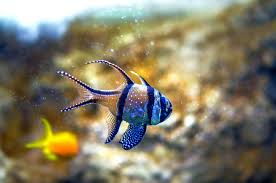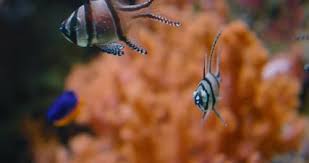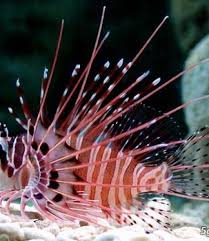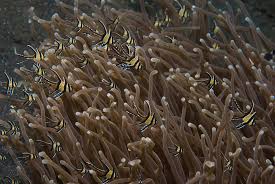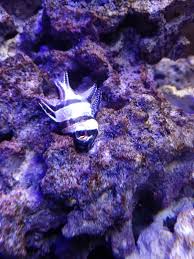The dragon (龙 – Lóng) is one of the most significant and revered symbols in Chinese culture, mythology, and art. Unlike the fire-breathing, fearsome dragons of Western folklore, Chinese dragons are often portrayed as celestial, benevolent beings associated with wisdom, power, and prosperity. This distinction is especially evident in the rich tradition of Chinese painting, where dragons have been depicted in various styles, settings, and artistic forms.
Ancient Chinese painters used dragons to symbolize imperial authority, cosmic forces, and spiritual guardianship, crafting masterpieces that continue to be admired for their grace, symbolism, and cultural depth. This article explores the depiction of dragons in ancient Chinese paintings, analyzing their symbolism, historical evolution, and artistic techniques.
1. The Symbolic Meaning of Dragons in Ancient Chinese Paintings
1.1 The Dragon as a Symbol of Imperial Power
In ancient China, the dragon was a powerful political symbol, closely associated with the emperor and his divine authority. The imperial dragon (五爪龙 – Wǔ zhǎ lóng), distinguished by its five claws, was reserved exclusively for the Son of Heaven (天子 – Tiānzǐ).
- Court paintings during the Tang (618–907 CE) and Song (960–1279 CE) Dynasties often depicted golden dragons soaring through the clouds, symbolizing the emperor’s dominion over the world.
- Imperial portraits frequently featured dragons encircling the throne, reinforcing the ruler’s connection to celestial power and divine wisdom.
- The Nine Dragons Scroll (九龙图 – Jiǔ Lóng Tú) by Chen Rong (陈容, 1235 CE, Southern Song Dynasty) is a masterpiece illustrating the dynamic and mystical essence of dragons, embodying the supreme energy of nature and the cosmos.
1.2 Dragons Representing Cosmic Forces and Natural Balance
In Taoist and Buddhist art, dragons were often depicted as celestial beings controlling the elements. They were believed to bring rain, command the seas, and balance yin-yang forces in the universe.
- Paintings from the Yuan Dynasty (1271–1368 CE) depict dragons emerging from clouds, dancing between waves, and coiling around mountains, signifying their role as masters of nature.
- In Daoist mythology, dragons represented qi (气), the vital energy flowing through all living things, and were painted in ways that emphasized fluid motion and ethereal presence.
1.3 Dragons as Guardians in Religious and Mythological Paintings
Dragons were also depicted as spiritual protectors, often appearing in paintings of Buddhist deities, celestial beings, and sacred landscapes.
- The Dragon King (龙王 – Lóng Wáng), a mystical ruler of the four seas, was frequently illustrated in Buddhist murals guarding temples, shrines, and enlightened beings.
- Paintings of Guanyin (观音, the Goddess of Mercy) sometimes feature dragons at her feet, symbolizing her control over the ocean and divine protection for sailors and fishermen.
- Daoist scroll paintings often show dragons interacting with immortals, reinforcing their role as divine companions and celestial messengers.
2. The Evolution of Dragon Depictions in Different Chinese Dynasties
2.1 Dragons in Tang Dynasty Paintings (618–907 CE)
The Tang Dynasty marked a golden age of Chinese painting, where dragons were depicted with refined brushwork, vibrant colors, and elegant compositions.
- Artists like Yan Liben (阎立本) and Wu Daozi (吴道子) created dynamic dragon paintings, blending realism with supernatural elements.
- Many paintings from this era show dragons coiling through the sky, emphasizing their majestic and untamed power.
- Court murals depicted dragons with silk-like, flowing bodies, symbolizing imperial dignity and cosmic energy.
2.2 Song Dynasty (960–1279 CE): The Rise of Expressive and Naturalistic Dragons
The Song Dynasty witnessed the emergence of detailed, naturalistic dragon depictions, where artists focused on expressing the essence of movement and spirit.
- Chen Rong’s Nine Dragons Scroll (九龙图卷, 1244 CE) is a masterpiece of dragon art, capturing the creature’s fluidity, power, and mythical aura.
- Dragons in Song landscape paintings often blended into misty mountains, swirling waves, and stormy skies, creating an ethereal, dreamlike effect.
- The brush techniques during this period became more refined, using delicate ink washes and fine outlines to emphasize the dragon’s energy and spiritual presence.
2.3 Yuan and Ming Dynasties (1271–1644 CE): The Expansion of Symbolism
During the Yuan (1271–1368 CE) and Ming (1368–1644 CE) Dynasties, dragon paintings evolved into more symbolic, abstract forms, often reflecting Daoist philosophy and metaphysical concepts.
- Dragons were frequently depicted in calligraphic brush strokes, merging with clouds, waterfalls, and celestial realms.
- Court artists of the Ming Dynasty painted dragons in rich gold and red hues, reinforcing their association with imperial grandeur.
- Paintings from this period emphasized the balance of strength and grace, with dragons depicted as fluid, ever-changing beings in harmonious compositions.
2.4 Qing Dynasty (1644–1912 CE): Ornate and Decorative Dragon Art
By the Qing Dynasty, dragon paintings became more ornate and decorative, often appearing in imperial art, textiles, and large-scale murals.
- The five-clawed dragon became the exclusive symbol of the Qing emperors, appearing in court paintings, silk scrolls, and temple frescoes.
- Artists used bold colors, intricate gold detailing, and elaborate patterns to enhance the mystical aura of dragons.
- Some paintings during this era also reflected Manchu artistic influences, blending Chinese and Central Asian dragon styles.
3. Artistic Techniques Used in Ancient Dragon Paintings
3.1 Ink Wash and Freehand Brushwork
- Many dragon paintings used ink wash techniques, allowing artists to create soft, fluid lines that mimic the dragon’s dynamic movement.
- Freehand brushwork (写意 – Xiěyì) was used to capture the essence of the dragon rather than strict realism, emphasizing spiritual vitality over physical details.
3.2 Gold and Color Embellishments
- In imperial paintings, artists used gold powder, cinnabar red, and jade green to highlight the dragon’s sacred nature.
- This technique was especially prominent in Ming and Qing Dynasty court paintings, where dragons appeared opulent and majestic.
3.3 Layered Composition and Movement
- Dragon paintings often featured layered compositions, creating an illusion of depth and movement.
- Artists used circular strokes and interwoven cloud patterns to depict the dragon’s serpentine, flowing motion.
Conclusion: The Enduring Legacy of Dragons in Chinese Painting
The depiction of dragons in ancient Chinese paintings reflects their deep-rooted cultural and spiritual significance. From imperial power and cosmic energy to natural balance and artistic mastery, dragons have been an enduring subject in Chinese art for over a thousand years.
Even today, these masterpieces of dragon paintings continue to inspire artists, scholars, and admirers worldwide, serving as a timeless representation of Chinese mythology, history, and artistic excellence.






